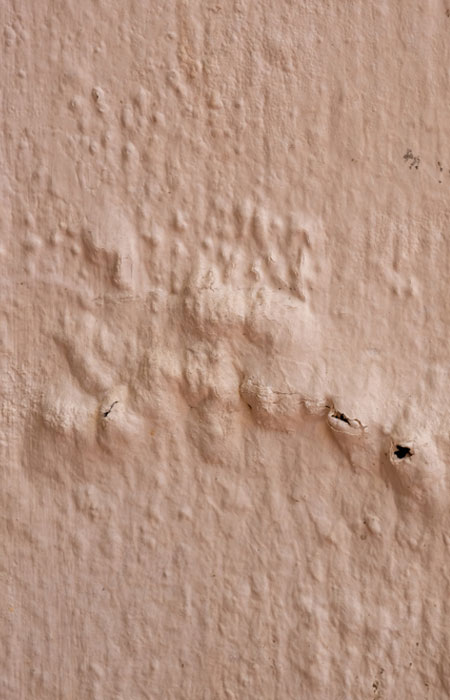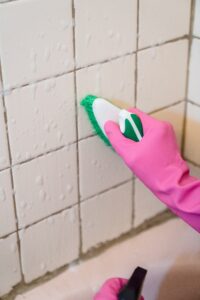Discovering Stains from Water on Wall Surfaces - How to Address Them Skillfully
Discovering Stains from Water on Wall Surfaces - How to Address Them Skillfully
Blog Article
This great article following next relating to How to Find and Repair Water Leaking in the Wall is fairly entertaining. Read it for yourself and decide what you think of it.

Water spots on walls are not pleasant to the eyes. In some cases it appears virtually unavoidable to experience water discolorations on wall surfaces in residences.
Homeowners residing in damp areas frequently take care of the concern of water spots on wall surfaces. But that does not have to be the case for you. With precise as well as well-shaped details on the reasons for water stains and also punctual repair work procedures, you will always be an action ahead of such incidents. So, this article promises to be a practical guide for you.
3 Usual Sources Of Water Stains on Walls
As opposed to popular belief, water discolorations on wall surfaces do not always come from inadequate structure materials. There are a number of root causes of water stains on wall surfaces. These consist of:
Poor Drainage
When making a building strategy, it is crucial to ensure sufficient water drainage. This will prevent water from seeping right into the wall surfaces. Where the drain system is obstructed or missing, underground dampness develops. This web links to excessive wetness that you discover on the walls of your building.
The leading cause of wet wall surfaces, in this case, can be a bad water drainage system. It can likewise result from poor administration of sewage pipelines that run through the building.
Wet
When warm damp air meets completely dry cold air, it creates water beads to form on the walls of buildings. This happens in restrooms and also kitchens when there is steam from cooking or showers. The water droplets can tarnish the surrounding walls in these parts of your home as well as infect various other locations.
Wet or condensation influences the roofing and also walls of structures. This causes them to show up darker than other areas of the residence. When the wall is wet, it produces a suitable environment for the development of microorganisms as well as fungi. These might have damaging impacts on health and wellness, such as allergies and also breathing conditions.
Pipe Leaks
Many houses have a network of water pipes within the walls. This guarantees that the pipelines are well away from the reach of destructive rodents. It constantly raises the stability of such pipes, as there is little oxygen within the wall surfaces. This prevents rust.
Yet, a disadvantage to this is that water leakage impacts the wall surfaces of the structure and also causes widespread damages. An indication of defective pipes is the look of a water tarnish on the wall.
Water Discolorations on Wall: Fixing Tips
When dealing with water discolorations, homeowners would usually want a quick solution. Yet, they would certainly soon understand this is detrimental as the water spots recur. Here are a couple of helpful suggestions that will certainly guide you in the repair work of water spots on walls:
Pro Suggestion
A houseplant in your house likewise enhances its humidity. If the house is currently moist, you might desire to introduce houseplants with minimal transpiration. An example of suitable houseplants is succulents.
Conclusion
No one desires to have water spots on walls in their house, it can occur to the best of us. This short article provides you leverage, as you currently know how to manage this problem if it does happen.
It is always best to recruit professional services to help repair the damages in your home.
In some cases it appears nearly inescapable to experience water spots on walls in residences.
Contrary to preferred belief, water spots on wall surfaces do not always stem from bad structure materials. There are numerous causes of water stains on wall surfaces. The water beads can stain the bordering walls in these parts of your house as well as spread to various other locations.
Right here are a couple of helpful suggestions that will certainly direct you in the repair work of water spots on walls:
CHECKING FOR WATER DAMAGE
Water damage can be costly, and it may begin before you even notice the first signs of trouble. Water damage can cause mold and mildew in your walls and floors, which can create an abundance of health concerns for your family. It can also lead to costly repairs of various appliances and general home fixtures. To avoid the pricey consequences of water damage, here are Warner Service’s top 5 places you should check:
The walls – The easiest place to spot the beginnings of water damage is on the walls and ceilings of your home. If water damage is present, there will most likely be water stains, especially around the windows and doorframes, and/or cracks in the drywall. If a stain looks unusual (discolored to brown, black or gray, raised texture), has a swollen appearance or is soft to the touch, contact a professional immediately. The pipes – To avoid water damage, consistently check the pipes in your kitchen (especially the dishwasher and ice maker), bathrooms, laundry room (specifically washing machines) and basement for corrosion, leaks and water stains. Pay special attention to where the pipes connect in your home and the location of caulking around the bathroom fixtures, including toilets, sinks, showers and tubs. Missing or loose caulking and grout could be signs of leaking water. This seepage can also quickly cause mold and rust, so double check your water heater and tank for wet spots on the floor. The floor – Water damage is very easy to spot on the floor. Look for any warping or buckling of the material, especially in the basement. If your home has wood flooring, look for bright white or dark stains. If your home has carpeting, keep it dry and clean. A damp carpet that smells of mold could cause water damage and health problems. To avoid this, consider installing floor pans under your appliances to help prevent damages from small, slow and undetected leaks. The basement and attic – If your basement or attic smells odd check for mold and mildew around the area, especially the valley where the roof meets. While you are inspecting those areas, check for wall cracks, floor stains, rust and dampness in the insulation. If you live in a colder and/or rainier climate, perform routine checks for water damage from melting snow or ice and rain. The exterior – Check the roof for damaged flashing and missing, cracked or curled shingles. There should also be no standing water anywhere outside your home. This could be caused by puddles, leaky rain gutters or hoses, poor drainage, or short gutter spouts. Invest in a sump pump system or water flow monitoring system, and perform routine maintenance on these outdoor appliances to avoid indoor water damage.

Do you appreciate reading about ? Try leaving a remark down below. We would be pleased to see your reactions about this entry. We hope that you come back again soon. Please take the opportunity to distribute this article if you enjoyed reading it. Thanks so much for your time invested reading it.
Visit Site Report this page